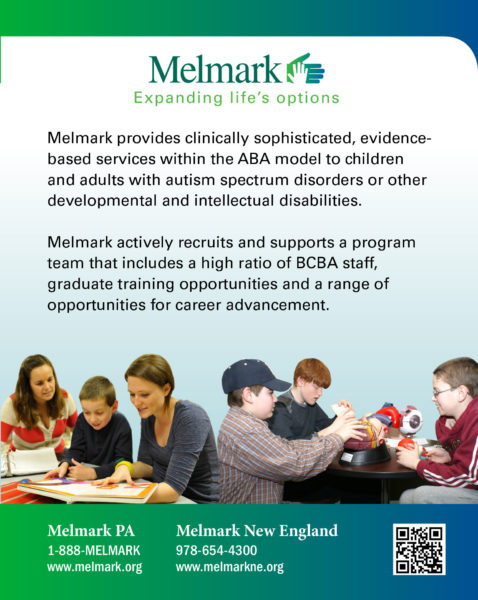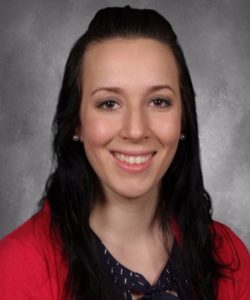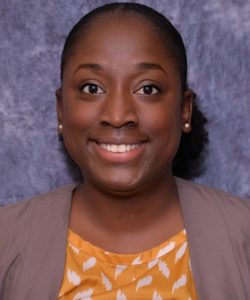All children, including those with autism and other developmental disabilities, are entitled to a free and appropriate education (FAPE), as outlined originally in Section 504 of the Rehabilitation Act of 1973, as well as the Individuals with Disabilities Education Act (IDEA) (Individuals with Disabilities Act, 2004). This includes educational services which are designed to meet the individual needs of students with disabilities, including evaluation and subsequent re-evaluation for the need and level of special education and related services, access to general education curriculum, and non-disabled children to the greatest extent possible, and the right to due process. In a recent court case (Endrew F. vs Douglas County School District), the Supreme Court ruled that effective Individualized Education Plans (IEPs) must give students more than de minimis (i.e., minimal) educational benefit. This represented a departure from prior rulings that emphasized benefit, and permitted minimal benefit.

In order for IEP teams to provide students with disabilities educational programing that maximizes success and independence, a comprehensive IEP process must be established. This includes creating appropriate IEP goals and objectives based on direct and indirect assessments (Gould, 2011), choosing functional goals and targets to optimize academic achievement and increase skills for post-21 preparedness (Wehman & Kregel, 2012), continuous progress monitoring for rate of acquisition, and progress toward annual IEP goals, and data-based decision making in regards to modifications of program materials and/or instruction (Wehmeyer et al., 2002; Thoma, Ligon, & Witing, 2004).
Assessments
Once functional skill areas to be addressed in effective IEPs are identified by the team, a determination must be made regarding which specific skills will be targeted under each goal for that year. IEP teams must be strategic in selecting target skills to teach each year because the skill deficits associated with ASD can affect all areas of an individual’s development. It may be necessary to prioritize goals, so that the list is able to be accomplished. Comprehensive assessment is required to determine the student’s current skill repertoire as well as their areas of strength and need related to the functional objectives identified by the team. According to Gould et al. (2011), failure to thoroughly assess a student’s needs prior to program planning could result in a number of issues including an unbalanced curriculum and a program that is not sufficiently individualized to the student’s needs to result in meaningful progress. Each of these issues could significantly impact a student’s ability to make meaningful progress towards his or her goals. For example, selecting target skills without first assessing a student’s baseline performance could mean that the team spends the entire IEP year attempting to teach a skill for which the student does not possess the necessary prerequisites. Doing so results in lost instructional time and potential frustration for the student. Notari & Drinkwater (1991) found that goals written based on the results of assessment were more functional, measurable, and had greater generality than those written from a computer-generated list of targets. Similarly, Pretti-Frontczak & Bricker (2000) found that teachers who were provided with training in administration and interpretation of assessments wrote higher quality IEP goals than those they had written prior to receiving the training.
A wide array of assessment tools is available to IEP teams, including both direct (e.g., Verbal Behavior Milestones Assessment and Placement Program) and indirect (e.g., Vineland Adaptive Behavior Scales) assessments. Direct assessments require that the student demonstrate the target skill at the time of assessment, whereas indirect assessments ask respondents to rate how often they have seen a student demonstrate a particular skill over some time period (e.g., in the last 6 months). Regardless of whether direct or indirect assessment methods are used, Gould et al. (2011) recommend that teams utilize assessment methods that are comprehensive and consider the function of the behavior. Finally, they recommend that there be a direct link from assessment items to specific targets within the student’s programming and that assessments be used in tracking student progress over time through repeated administration.
Functional Targets/Goals
When considering effective IEP goals, educators and families should reflect on the functionality of each goal. An effective IEP goal or objective can be considered functional if it is useful to the child in negotiating his or her daily environments (Pretti-Frontczak 2000). Boavida et al. (2014) describe high-quality goals as meeting certain criteria, including being appropriate for the context and reflecting real-life situations, and addressing meaningful skills necessary for the child’s participation in family, classroom and community routines. Furthermore, it is important to identify appropriate instructional objectives that promote independence and to be of life long value (Bender, 1998). If limited time or ability presents itself, it is important to teach skills that will be needed to navigate the environment through adulthood. For instance, learning to read directions to complete a task at a job site would be more functional than learning to read words from a story book. Wehman and Kregel (2012) suggest looking at each subject and considering skills needed in several domains as an adult such as: employment/education, home and family, leisure, community, and physical health. In other words, in the area of math, what skills would one need to learn to navigate a job.
It is important to determine effective IEP goals based on the individual and his or her needs. The IEP team, including the individual and his or her family, should consider the child’s most likely scenario of adult life and work towards skills that will be of use in that scenario. The family is the best team member(s) to determine what is functional for their child. IEP goals and objectives should be referenced to valued life outcomes as described by the individual or family, taking into account health, having friends, having creative outlets, making choices, age appropriate control and having access to preferred places and activities (Giangreco et al. 1994). The effective IEP team’s aim should be for the student’s life to be better as a result of participating in the educational experience expressed in the IEP (Giangreco et al. 1994).
Modifications to Instructions
The use of data-based instructional modifications are essential during the process of developing and running instructional programming (Horner et al., 2005). Butler and Stevens (1997) defined modification and accommodations as providing support to students by adjusting assessment or instructional materials so that the student can respond appropriately. Thoma, Ligon, and Witing (2004) defined instructional modifications as the support provided to students with disabilities in order to access the curriculum.
Effective IEPs are important documents that drive decision making concerning instructional modifications (Shriner & DeStefano, 2003). In order to determine which type of modifications to implement, teachers must first determine the presence or absence of specific skills and abilities by conducting assessments or referencing the data gathered from previous assessments (Greer & Ross, 2008). Upon completion of assessment and data analysis, the information collected is used to confirm which type of modifications to instruction should be implemented. Thoma, Ligon and Witing (2004) highlighted three types of instructional modifications; adaptations, augmentation, and alterations. Curriculum adaptations refers to any modifications and adjustments made towards the presentation of the curriculum in order to modify the learner’s engagement with the curriculum (Wehmeyer et al., 2002). Augmentation refers to modifications that add to the curriculum and alteration refers to altering a curriculum so that it meets the functional needs of a learner (Thoma, Ligon, & Witing, 2004). The use of modifications along with data collection in order to monitor student progress is necessary in ensuring that students with disabilities are making reasonable progress and teachers should be equipped with the resources required in order to implement effective strategies (Shinn, 1989).
Conclusion
IDEA outlines that all children eligible for school aged-services are entitled to FAPE. Based on this federal requirement, as well as the recent Supreme Court ruling regarding academic progress (Endrew F. vs Douglas County School District), a comprehensive pre-IEP process must be established to ensure effective, appropriate, functional, and attainable goals are being set for each student on an annual basis. This includes direct and indirect assessments to determine appropriate annual goals and short term objectives, choosing functional targets that will maximize academic achievement and preparedness for vocational opportunities and an increase in quality of life for the individual, consistent progress monitoring, and data-based program modifications to best meet the needs of the individual.
Sharon Onda, MEd, BCBA, Kylee Formento, MA, BCBA, Erin Way, MS, BCBA, and Vanessa Laurent, PhD, BCBA-D, are Assistant Directors of Educational Services, at The Melmark School, Pennsylvania.
Melmark is a multi-state human service provider with premier private special education schools, professional development, training, and research centers.
Melmark is committed to enhancing the lives of individuals with autism, intellectual and developmental disabilities and their families by providing exceptional evidence-based and applied behavior analytic services to every individual, every day.
For more information, please visit www.melmark.org, or www.melmarkne.org.
References
Bender, M., Valletutti, P.J., Baglin, C.A. (1998). A functional curriculum for teaching students with disabilities. Volume IV. Interpersonal, competitive job-finding and leisure-time skills. Austin, TX: Pro-ed.
Boavida, T., Aguiar, C., & McWilliams, R.A. (2014). A training program to improve IFSP/IEP goals and objectives through the Routines-Based Interview. Topics in Early Childhood Special Education. 33, 200-211.
Butler, F. A., & Stevens, R. (1997). Accommodation strategies for English language learner on large-scale assessments: Student characteristics and other considerations. Los Angeles: University of California, National Center for Research on Evaluation Standards and Student Testing.
Giangreco, M.F., Dennis, R.E., Edelman, S.W., & Cloninger, C.J. (1994). Dressing your IEPs for the general education climate. Analysis of IEP goals and objectives for students with multiple disabilities. Remedial and Special Education, 15 (5), 288-296.
Gould, E., Dixon, D.R., Najdowski, A.C., Smith, M.N., & Tarbox, J. (2011). A review of assessments for determining the content of early intensive behavioral intervention programs for autism spectrum disorders. Research in Autism Spectrum Disorders, 5, 990-1002.
Greer, R. D., & Ross, D. (2008). Verbal behavior analysis: Inducing and expanding new verbal capabilities in children with language delays. Boston: Allyn&Bacon.
Grishham-Brown, J., Hemmeter, M.L. (1998). Writing IEP goals and objectives reflecting an activity-based approach to instruction for young children with disabilities. Young Exceptional Children. Spring, 2-10.
Horner, R. H., Carr, E. G., Halle, J., McGee, G., Odom, S., & Wolery, M. (2005). The use of single-subject research to identify evidence –based practice in special education. Exceptional children, 71(2), 165-179.
Howell, H. T. (2016). Endrew F. v. Douglas County School District: How Much Benefit Is Enough When Evaluating the Educational Needs of Disabled Students in Federally-Funded Public Schools. Am. J. Trial Advoc., 40, 347.
Idol, L. (2006). Toward inclusion of special education students in general education: A program evaluation of eight schools. Remedial and Special Education, 27(2), 77-94.
Individuals with Disabilities Education Act of 2004. Public Law 108-446, 108th Cong., Statute 2647. Retrieved from: http://uscode.house.gov/view.xhtml?path=/prelim@title20/chapter33/subchapter3&edition=prelim
Myles, B. S., & Simpson, R. L. (1989). Regular educators’ modifications preferences for mainstreaming mildly handicapped children. The Journal of Special Education, 22(4), 479-489.
Notari, A.R., & Drinkwater, S.G. (1991). Best practice for writing child outcomes: An evaluation of two methods. Topics in Early Childhood Special Education, 11 (3), 92-106.
Pierangelo, Rl, & Giuliani, G. (1998). Special Educator’s Complete Guide to 109 Diagnostic Tests: How to Select and Interpret Tests, Use Results in IEPs, and Remediate Specific Difficulties. Prentice Hall Direct, 240 Frisch Court, Paramus, NJ 07652.
Pretti-Frontczak, K. & Bricker, D. (2000). Enhancing the quality of individualized education plan (IEP) goals and objectives. Journal of Early Intervention, 23 (2), 92-105.
Prince, A. M., Yell, M. L., & Katsiyannis, A. (2017). Endrew F. v. Douglas County School District (2017): The US Supreme Court and Special Education. Intervention in School and Clinic, 1053451217736867.
Shinn, M. R. (Ed.). (1989). Curriculum-based measurement: Assessing special children. Guilford Press.
Shriner, J. G., & Destefano, L. (2003). Participation and accommodation in state assessment: The role of individualized education programs, Exceptional Children, 69(2), 147-161.
Thoma, C, Ligon, K., & Witing, K. (2004). Accessing the general curriculum within a functional curriculum framework. In P. Wehman & J Kregel (Eds.), Functional curriculum (pp. 95-111). Austin, TX: PRO-ED.
Wehman, P., Kregel, J. (2012). Functional curriculum for elementary and secondary student with special needs. Third edition. Austin, TX: Pro-ed.
Wehmeyer, M. L., Sands, D. J., Knowlton, H. E., & Kozleski, E. B. (2002). Achieving access to the general curriculum. In M. L. Wehmeyer, D. J. Sands, H. E. Knowlton, & E. B Kozleski (Eds.), Teaching students with mental retardation: Providing access to the general curriculum (pp. 51-68). Baltimore, MD: Brooks.










